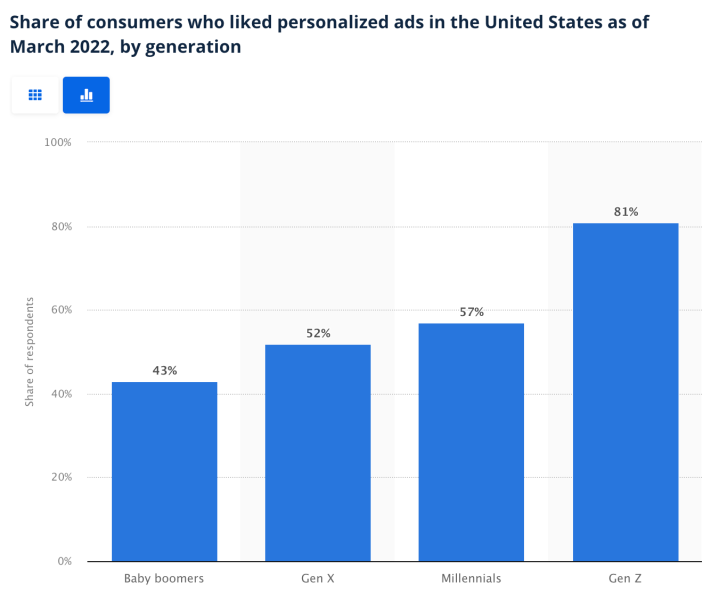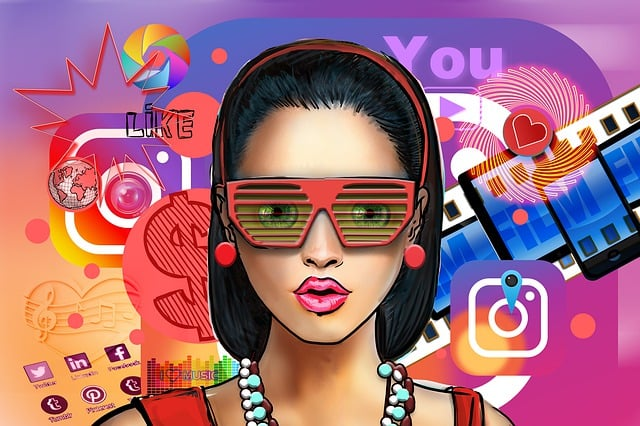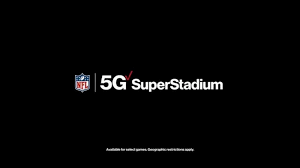In the dynamic world of business, understanding advertising trends is a crucial lifeline for a growing business to connect with your audience. More than just a means to promote products or services, it’s a pivotal strategy that enables businesses to connect authentically with their target audience, build brand recognition, and ultimately drive revenue growth.
Given the fast-paced nature of the industry, however, information about the newest and most effective digital advertising trends can be dispersed across numerous reports and websites. Recognizing the importance of cohesive, reliable, and accessible information, at Business2Community, we’ve compiled a list of the most promising digital advertising trends, for 2025.
Key Advertising Trends
- Voice ad spend is set to jump to $10.14 billion globally by 2023.
- Businesses can see up to 30% increase in ROI using best advertising practices, such as personalized experiences.
- The average return on ad spend (ROAS) for most businesses is between 200% and 300%.
- 59% of US adults are willing to watch video ads on streaming platforms for lower subscription prices.
- 63% of businesses plan to use AI in influencer campaigns in 2023.
What are 2025‘s Advertising Trends?
Strong advertising has a proven impact on critical metrics such as return on investment (ROI) and return on ad spend (ROAS). According to a 2022 Nielsen study by Google, companies can experience up to a 30% increase in ROI when their advertising strategies align with best practices.
The best practices for optimizing ad campaigns performance are as follows:
- Create ads that immediately capture the audience’s attention through engaging visuals, intriguing content, or a unique hook.
- Ensure the brand is prominently and clearly featured in the ad, making it easily recognizable to viewers.
- Craft ads that establish a personal connection with the audience, addressing their needs, interests, and emotions effectively.
- Motivate viewers to take action, whether it’s making a purchase, signing up for a newsletter, or any other desired engagement.
According to Google Ads, the average ROAS for most businesses falls between 200% and 300%. This range, however, can vary widely depending on the industry, time of year, and the effectiveness of the marketing strategy deployed.
These digital advertising trends provide insights into how to create impactful ad content, optimize ad spending, and reach your target audience more effectively. We’re going to delve into the most promising advertising trends for 2025, arming you with the knowledge to enhance your advertising strategies and ultimately, drive sales.
1. Contextual Advertising
Contextual advertising is when businesses use data-driven insights to display targeted ads based on the content of a web page. This type of advertising can increase relevance and uptake.
According to Insider Intelligence, the US digital advertising industry alone generated $129.34 billion in 2019, with a significant part attributed to contextual advertising. Contextual advertising uses a system of complex algorithms to analyze the given page’s text and deliver ads that are relevant to the content.
In a 2022 survey conducted in the US, 81% of Gen Z respondents expressed a preference for personalized ads, while 57% of Millennials echoed the same sentiment. It was observed that the preference for personalized ad formats diminished as the age of the respondents increased, with 57% of Gen X and only 43% of Baby Boomers preferring personalized ads.
A study conducted by the Network Advertising Initiative in 2021 found that behaviorally-targeted ads are more than twice as effective at converting users who click on the ads into buyers. Contextual advertising, by aligning with consumer behavior, provides a higher likelihood of click-throughs and conversions.
For example, YouTube campaigns employing intent-based targeting on mobile devices achieved a 50% greater increase in brand awareness compared to campaigns exclusively relying on demographic targeting. Contextual advertising works on the principle of relevance, serving ads in direct correlation with the content consumed by the user, enhancing user engagement, and potentially improving advertisement effectiveness.
2. Advertising on Streaming Platforms
With the rise of streaming platforms like Hulu and Peacock offering ad-supported tiers, businesses have a new avenue for reaching consumers.
By the year 2026, Hulu’s advertising revenue in the US is anticipated to hit the $5 billion mark. It’s expected to outstrip other video-on-demand platforms like Peacock and Netflix, which are projected to amass display advertising revenues of $2.7 billion and $1.7 billion, respectively.
A 2022 survey by Hub Entertainment Research found that 59% of US adults would be willing to watch ads in exchange for lower subscription prices. Nearly 40% of respondents favored streaming services that offered clear ad-free and ad-supported tiers, compared to only 22% who preferred a single “limited ads” option.
Data shows that viewers have been satisfied with the video ad experience on major streaming platforms offering supported tiers, such as Disney+, HBO Max, and Netflix. For example, 33% of Disney+ subscribers found ads to be better compared to other ad-supported services. The numbers for HBO Max and Netflix were similar, at 32% and 27%, respectively.
The same Hub Entertainment Research survey also revealed that viewers’ engagement decreases when ad frequency exceeds 11 ads per half-hour show or when ad lengths extend beyond 90 seconds. Longer and more frequent ads receive less attention.
Conviva’s 2021 State of Streaming Advertising report revealed many key findings for streaming video ad content, including the following:
- Streaming advertising investment is hindered by a data deficiency, with 70% of sellers feeling confident in their data resources, but only 39% of buyers agreeing that they possess the necessary customer data for streaming campaigns.
- Monetizing through targetable audiences remains a challenge, as nearly 75% of advertising sellers believe that streaming inventory can be effectively targeted in a programmatic ecosystem, and household audience targeting is feasible for direct purchases. However, less than half of ad buyers share this perspective.
- The impact of quality of experience (QoE) on advertising is as critical as it is for content. 54% of viewers indicated that they abandon a stream when a video ad either fails to load or takes too long, supported by Conviva’s data showing that a mere five-second ad delay results in 19.24% of viewers completely leaving the stream.
- While 69% of buyers and 75% of sellers consider privacy laws, they must also focus on building viewer trust by avoiding overly granular targeting. Less than a third of consumers are confident that their privacy is protected, and 29% have experienced uncomfortable targeting through streaming ads.
- 59% of viewers believe there are too many repeated streaming ads during the same break or episode, a critical issue that needs resolving to attract more investment from buyers and increase the 36% of viewers who are content with streaming advertising.
- Brand safety is a key concern, with only 8% of buyers feeling that streaming content offers a safe context for their brand. However, those who do agree on brand safety are 174% more likely to recommend the medium.
- A third of viewers are considered “Untapped Potentials” for streaming advertising monetization. This segment of viewers expressed the lowest satisfaction with streaming ads, with just 6% indicating they liked the ads they saw, 12% finding streaming ads relevant, and 17% expressing confidence that their privacy was protected while streaming.
3. Social Media Advertising
The rapidly changing landscape of social media platforms presents a continually evolving space for advertisers to reach their target audiences. In 2023, social media ad spending in the US was $270 billion, which is expected to reach $300 billion by 2024.
A 2023 study by Sprout Social revealed the following key points that are shaping the future of social advertising:
- 80% of business leaders foresaw a boost in their organization’s social media budget within the next three years, with over 44% of them expecting a surge exceeding 50%.
- 90% of business leaders concurred that their company’s triumph hinges on the proficient utilization of social media data and insights to shape business strategies.
- 97% of business leaders shared the belief that AI tools and machine learning will enhance the efficiency of analyzing social media users data and insights for companies.
Influencer Marketing
The global influencer marketing platform market was valued at $14.27 billion, and is projected to reach $143.10 billion by 2030, growing at a CAGR of 33.4% from 2022 to 2030.
According to a study by Influencer Marketing Hub:
- 63% of businesses intend to employ AI in the execution of their influencer campaigns, with two-thirds of these brands focusing on AI for influencer identification.
- Over 83% of survey participants maintained their belief in influencer marketing’s effectiveness as a marketing strategy.
- A noteworthy 23% of survey participants aimed to allocate over 40% of their entire marketing budget to influencer campaigns.
- There’s a strong inclination for collaborating with smaller influencers, with 39% favoring nano-influencers and 30% leaning towards micro-influencers, while a smaller percentage opt for more expensive macro-influencers (19%) and celebrities (12%).
- Paying influencers (42%) has now become the standard practice, surpassing the practice of offering them free products (30%).
- TikTok, adopted by 56% of brands employing influencer marketing, took the lead as the most popular influencer marketing channel, surpassing Instagram (51%) for the first time, and significantly ahead of Facebook (42%) and YouTube (38%).
4. Video Ads
As a storytelling medium, video advertising continues to dominate the digital marketing sphere. The global video advertising market is projected to reach $176.6 billion in 2023 and up to $229.8 billion by 2027, growing at a CAGR of 6.8%. Streaming video-on-demand (SVOD) services, social media platforms, and online video platforms are the primary drivers of this growth.
A 2023 report from Wyzowl stated the following key findings:
- 91% of businesses consider video as an important part of their marketing strategy.
- People spend an average of 17 hours a week watching online videos, down from 19 hours in 2022.
- A total of 89% of individuals reported that viewing a video played a role in persuading them to make a purchase of a product or service.
- Interactive short-form video ads are on the rise, with 31% of marketers reporting that they have used an interactive video.
- YouTube remains the most popular platform for video display advertising, with a massive 90% of businesses having invested in YouTube ads. Facebook follows closely, with 86% of businesses considering it a place to spend their advertising dollars.
5. Voice Search Advertising
As the use of voice-activated virtual assistants like Alexa, Siri, and Google Assistant continues to surge, voice search advertising is gaining traction as a powerful and emerging trend in the advertising industry.
2018 data from BrightLocal stated that 58% of consumers had used voice search results to find local business information in the previous year. While local businesses stand to benefit immensely from voice search advertising, the lack of a visual interface presents a challenge for advertisers, necessitating creative and strategic approaches to engage users.
Despite the challenges, Statista predicts that voice ad spend will reach $10.14 billion globally in 2023. The success of voice search advertising hinges on understanding and optimizing for conversational queries, considering the nuances of spoken language compared to typed queries.
According to a study by PWC, 74% of consumers use their voice-enabled devices at home. While the 18-24-year-old demographic is embracing voice technology at a faster pace than older age groups, they tend to use their voice assistants less. In contrast, those aged 25-49 are the most frequent users and are statistically more likely to be classified as “heavy” users.
The same PWC study also revealed the following regarding voice-enabled devices:
- 90% of respondents were familiar with voice-enabled products and devices, with 72% having used a voice assistant. Adoption is driven by younger consumers, households with children, and those with an income exceeding $100K.
- Approximately 74% of consumers primarily use mobile voice assistants at home due to privacy concerns when using them in public.
- 50% of respondents have made purchases using their voice assistant, and 25% would consider doing so in the future. Small, non-physical items are commonly purchased.
- Approximately 80% of consumers who have shopped using voice assistants are satisfied.
- 25% of consumers do not trust their voice assistants for shopping, primarily due to concerns about order processing and privacy. Some worry about unauthorized purchases by others in their households.
The Future of Advertising
As we look ahead, the dynamic domain of social, voice, and display advertising trends continues to evolve, shaped by technological advancements, data-driven strategies, higher additional and digital advertising budgets, and a keen understanding of consumer behavior. Three key areas of focus stand out for their potential to transform the advertising landscape in the longer term.
AR and VR
Augmented reality (AR) and virtual reality (VR) are set to redefine experiential advertising, offering immersive experiences that take brand-customer interaction to new heights. Brands leveraging AR and VR can create personalized and engaging narratives, offering consumers a unique blend of reality and innovative digital marketing.
AR and VR have already found their way into advertisements of companies like Ikea and Pepsi. Ikea’s AR app, Ikea Place, allows customers to visualize how furniture would look in their homes before buying.
Pepsi, on the other hand, created a wildly successful VR campaign where a bus stop was transformed into an interactive screen, immersing passers-by in surprising scenarios, such as a roaring lion or an invading UFO.
5G
The rise of 5G technology will lead to faster, more seamless advertising experiences. With reduced latency and increased speed, 5G will facilitate real-time data analysis, enabling advertisers to tailor ad campaigns in almost real-time and respond swiftly to the latest trends.
The advent of 5G technology was instrumental in the successful launch of the Verizon and NFL’s ‘SuperStadium’ app. This app provided fans with multiple camera angles, in-stadium feeds, and real-time data during live games.
Ethical Use of Data
The ethical use of consumer data will become a major touchpoint, with changes to third-party cookies rules and shits to zero-party data. As consumers become increasingly conscious of their online privacy, advertisers will need to balance personalization with privacy, demonstrating transparency and respect for user data.
The ethical use of consumer data is crucial in advertising, as seen with companies like Apple. Apple has built its brand reputation partly on its commitment to user privacy, using anonymized, aggregated data for advertising, and giving users greater control over their personal data. As consumer consciousness around data privacy rises, transparent, ethical data usage will become a key differentiator in advertising.









